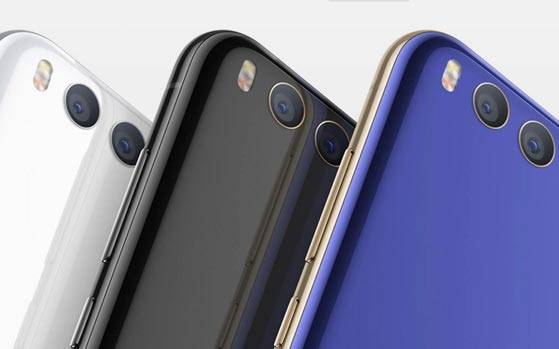
iaomi has done with Mi 6 what the Samsung Galaxy S8 should have done. The Mi 6 has matched, at least on paper, the phenomenal camera feature in the iPhone 7 Plus that Apple introduced last year. Yes, I am talking about that telephoto lens. In terms of the camera performance and features in a phone, the telephoto lens in the iPhone 7 Plus was arguably the single-biggest innovation in the 2 to 3 years. The sheer usability of a telephoto lens is amazing. It is so good that we here at India Today Tech said that other phone companies should copy that. It didn’t happen so far. But now with Mi 6, Xiaomi has done it.
The effect on the whole phone industry, and for consumers, is going to be fantastic. This is because Xiaomi takes a unique feature, which was only available to those who were spending over Rs 70,000 on their phone until now, and brings it to masses. We don’t know what is going to be price of the Mi 6 in India but one thing is sure that it won’t be Rs 70,000. It will also not be Rs 50,000, you can be very sure of it. In fact the price of the Xiaomi Mi 6 in India could be close to Rs 25,000.
But before we talk about the effect, let’s take a look what exactly is this feature. When Xiaomi launched the Mi 6 at an event in China, it talked about its special cameras.
Also Read: Xiaomi Mi 6 launched with Snapdragon 835, 6GB of RAM and dual cameras
2 cameras and telephoto lens
Nowadays, almost all the high-end phones are coming with two primary cameras. The Xiaomi Mi 6 too comes with the same. It has two 12-megapixel cameras on the rear. Both cameras presumably use the Sony-made sensors for which the details have not been revealed yet. There are two different sensors here. The primary camera in the Mi 6 uses a sharp and bright F1.8 lens. It also has a bigger image sensor, with pixels that are 1.25um large. Another bit is that this primary camera also has 4-axis optical image stabilisation.
And then there is the second camera. This one presumably uses a smaller image sensor with pixel size of 1um and has a slower F2.6 lens, somewhat similar to what the second camera in the iPhone 7 Plus has. But then it has one special component, just like that camera in the iPhone 7 Plus. It has a lens that comes with 2X zoom, well more or less because actually it is not exact double but 2mm less.
Now, there is no zoom in the lens in the Xiaomi Mi 6. It is just the second camera has a longer focal length compared to what the primary camera has. So, when a user switches between the two cameras, the effect is that of the zoom. This is similar to how Apple implements the feature in the iPhone 7 Plus. This is also why Xiaomi calls the second camera a telephoto lens. The company’s hasn’t publicly revealed the exact focal length of the second camera in the Mi 6 but India Today Tech has learnt that it is 52mm. Also, the focal length of the primary camera is 27mm. This is very close to what Apple offers in the iPhone 7 Plus, which has the second camera with the focal length of around 56mm.
Benefits of telephoto
The reason why we over here at India Today Tech requested all phone makers to include a telephoto lens in their flagship phones is because it is so damn useful. Right now there are different ways different companies are putting dual cameras on their phones. Huawei is doing it by including one full-colour camera and one with a monochrome image sensor. This is the same approach that recently Micromax followed with the Dual 5. Then there is LG, which is putting two cameras but with a approach that opposite of what Apple — and now Xiaomi — are doing.
A telephoto lens in a phone is so damn useful. It gives a user a different perspective when they are clicking photos. It makes images more personal, more striking
But the best approach so far that I have found is the one first seen in the iPhone 7 Plus. And that is the same approach now we see in the Mi 6. Clicking phones with a phone that has a telephoto lens is just so much more fun. The telephoto lens basically does two things:
-
A telephoto lens gives a user a different perspective while clicking photos. Because it allows photos that are up close, the telephoto lens also makes the images dynamic. They feel more personal, more striking. And of course, you get the “zoom” factor that means you can click a photo without getting to close to your miffed cat is ready to take a swipe at you in case you get close.
-
A telephoto lens also makes it possible for users to click portrait photos that are more striking. Not only it captures people from closer perspective but also helps in getting the blurred background. This is the reason why so many DSLR camera users love using a 50mm or 85mm lens.
Starting a trend
The iPhone 7 Plus was launched in September last year. Smartphone companies making Android phones are usually quite quick in bringing the best features of the iPhone to the world of Android. But nearly 7 months later, until the Mi 6 launched today, the telephoto camera of the iPhone 7 Plus remained unique. Micromax did take inspiration from the Apple phone for its portrait mode in the Dual 5 but there was no telephoto lens in it. It was expected that maybe Samsung will have the new feature ready for the Galaxy S8, but that too didn’t happen.
Also Read: Xiaomi Mi 6 launches today, new leaked images confirm dual camera and specs
It is good news for Android users then that finally the telephoto lens is out there is an Android phone. Even better news is that it is out there in a phone that will probably have a starting price of around Rs 25,000 in India.
Now that Xiaomi has a telephoto lens in its phone, it is also a certainty that this feature will come to many more Android phones, and particularly to those made by Chinese manufacturers. The competition will surely force other manufacturers to go the same route the Mi 6 has gone. This is similar to how the fingerprint sensor or how the curved glass on the phones has spread. For far too long phone companies have tried to hard-sell cameras in their devices on the basis of some buzzy — but useless — features. The telephoto lens will be a welcome change, for a while.
[“Source-indiatoday”]










